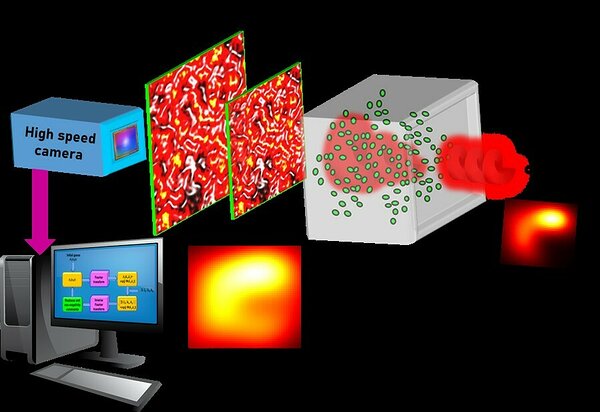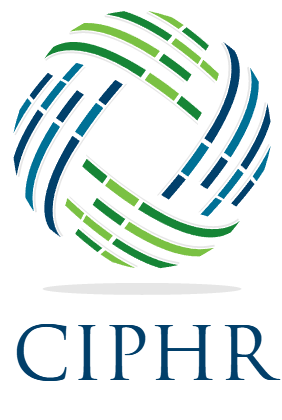The aim of the
Computational Imaging and Processing in High Resolution (CIPHR) project is to establish the Center of Photonics and Computational Imaging, a research unit within the University of Tartu (UTartu), that will become a world leader in Computational Imaging, a sub field of photonics. The center will connect already strong scientific fields in UTartu such as optics and spectroscopy, machine vision, remote sensing, electronics and informatics, and will enable them to thrive further by combining expertise and resources to investigate complex multidisciplinary problems.
Computational imaging is a rapidly evolving subfield of photonics, which has applications in microscopy, medicine, robotics, remote sensing and astronomy. The range of applications increases with advances in sensor technology, computer algorithms and on-board computing capacity. Computational imaging uses computational methods to enhance the image quality, resolution or add spatial dimension to the image beyond the physical or technical limits of the imaging system. By nature, the research is interdisciplinary, and embraces the extensive competence of the University of Tartu in optics, spectroscopy, mathematics, computer science and their applications. The field of computational imaging falls under photonics – an application-oriented science of light, which belongs to the Key Enabling Technologies of the European Commission.
Computational imaging is a rapidly evolving subfield of photonics, which has applications in microscopy, medicine, robotics, remote sensing and astronomy. The range of applications increases with advances in sensor technology, computer algorithms and on-board computing capacity. Computational imaging uses computational methods to enhance the image quality, resolution or add spatial dimension to the image beyond the physical or technical limits of the imaging system. By nature, the research is interdisciplinary, and embraces the extensive competence of the University of Tartu in optics, spectroscopy, mathematics, computer science and their applications. The field of computational imaging falls under photonics – an application-oriented science of light, which belongs to the Key Enabling Technologies of the European Commission.
| Research
Directions
|
| 1. Novel
imaging technologies based on chaos
|
|
Chaos
often gets a bad reputation in all areas of research and life. In the recent
years, chaos has been used as a powerful tool to develop new imaging
technologies and expand imaging characteristics beyond the conventional limits.
Our research group aims to advance the field of imaging using chaos in
amplitude, phase and polarization.
|
| 2. Imaging through scattering media |
Imaging
through scattering media is a challenging task. At University of Tartu, we aim
to develop technologies that enables seeing through scattering layers.
Different approaches are currently being developed including applying special
optical beams that are resilient to scattering as information carriers.
|
| 3. Manufacturing of scattering lenses |
|
Most
of the holography technologies use active devices such as spatial light
modulators to construct the optical system which is not only expensive but also
makes the system bulky and heavy. At University of Tartu we are manufacturing
passive scattering lenses that can modulate light along multiple dimensions and
can effectively replace active devices which leads to the development of
compact optical instruments.
|
YouTube Channel ‘CIPHR Talkies'
Computational imaging
technologies have been rapidly transforming the field of imaging. A new
computational reconstruction method called Lucy-Richardson-Rosen algorithm has
been developed to digitally refocus blurred images and 3D incoherent imaging
applications in 2022. Recently, CIPHR group (University of Tartu) in
collaboration with Computational Social Science Group (University of Tartu) and
the Optical Sciences Center (Swinburne University of Technology) has
demonstrated the Lucy-Richardson-Rosen algorithm for improving the least
distance of distinct vision of latest smart phones and also to improve the
classification performances of deep learning by as high as 500% in some cases.
This project was led Dr. Praveen PA, postdoctoral fellow in CIPHR group. A
short video of our research work.
We appreciate the contributions of Andrei Ioan Bleahu (University of Tartu), Shivasubramanian Gopinath (University of Tartu), Francis Gracy Arockiaraj (University of Tartu), Daniel Smith ( Swinburne Uni of Tech), Molong Han ( Swinburne Uni of Tech ), Soon Hock Ng ( Swinburne Uni of Tech ), Tomas Katkus (Swinburne University of Technology), Aravind Simon (University of Tartu), Amudhavel (University of Tartu), Vijayakumar Anand (University of Tartu & Swinburne Uni of Tech ), Saulius Juodkazis ( Swinburne Uni of Tech & Tokyo Institute of Technology, Japan), and Rajesh Sharma (University of Tartu), for their contributions at a different level of the project. Special thanks to Tiia Lillemaa, Project Manager for her continuous support. |
|
It is our pleasure to inaugurate our new YouTube Channel ‘CIPHR Talkies' https://www.youtube.com/watch?v=t5cb70157QE with this new video. More videos will be posted soon. Stay Tuned. 😊 |
University of Tartu to develop photonics with a €2.5m grant from the European Union
University of Tartu researchers are embarking on an extensive five-year project, during which a Centre of Photonics and Computational Imaging (CPCI) will be established with a €2.5m ERA Chair grant from the European Commission. The new centre will bring together the university’s expertise in photonics and related fields, and will also include a newly formed research group led by a top-level computational imaging researcher. A call for this position has been announced already.




_block.jpg)

-1.png)